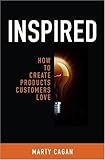A common question I see asked is, “How do I sell my educational mobile app to schools?” Many people building educational mobile apps are parents and educators who are creating good products. A good product isn’t enough for a viable business though; a business also needs a good marketing strategy.
However, this is still a very new market and there aren’t any “tried and true” methods yet. I’ve heard of a handful of tactics though. If you are an educational mobile app developer, perhaps some of these may work:
- Focus your messaging, Search Engine Optimization (SEO), and App Store Optimization (ASO) on schools. This means understanding issues that are important to schools, such as student outcomes, Common Core State Standards (CCSS), COPPA compliance, student privacy, data portability, School Information System (SIS) integration, etc.
- Get in touch with a school district’s technology integrator (also known as a technology specialist, technology coordinator, etc), whose job is to evaluate, integrate, deploy, and support the technology throughout their schools.
- Get information about which schools use mobile devices and may be receptive to or are currently seeking new mobile apps. This info isn’t cheap and can be found from organizations like MDR and EdLights.
- Hire an educational sales consultant to contact those people for you. LinkedIn can be a good starting point for finding one. Or try reaching out to some of the consultants who spoke at this previous Ed Market 101 session held by the Software & Information Industry Association (SIIA) in 2013.
- Get enough press that technology integrators take notice of you. This means targeting sources that schools pay attention to, such as conferences (e.g. ISTE), publications (e.g. Education Week), blogs (e.g. Edutopia), Twitter hashtags & chats (there are lots and lots), etc.
- Get into and integrate with online platforms and directories like Edmodo, Schoology, Clever, eSpark, EdSurge, and edshelf.
- Partner with a company that already has a contract with a school district, such as a Pearson or McGraw Hill.
Selling mobile apps to schools isn’t significantly different from selling other kinds of software to schools, in terms of requiring multiple licenses and school-wide deployment. But it does require knowing which schools use mobile devices in their curricula and understanding what schools care about and how to reach them (which is a question of both where and when).
The technology teams at school districts are constantly sold to, so many are wary of a sales pitch. Whatever you have to say, chances are they’ve heard it before. They need to justify their purchases, so sales pitches that include data on demonstrable improvements in student outcomes tend to be the most effective.




